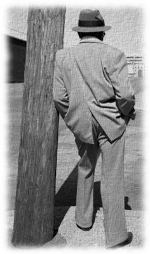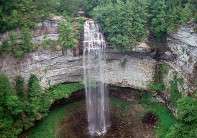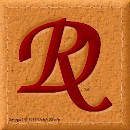
« That Mysterious Keeper of the Keys and Honorary Mayor of »
« R o a r i n g F a l l s™ »
«  Dutch Rhudy »
Dutch Rhudy »
Introduction to Roaring Falls:
Welcome, and Thank You for stopping in my Friend!
I've been sitting here at my desk, staring at a blank screen now for over an hour, just thinking to myself. It is much easier for me to write an entire story than to try to explain the things that go on inside my head. What should I be writing here in the way of an introduction? What am I introducing? Myself? A book? or perhaps, A series of books?
No, what I actually want to introduce is a concept, one that should prove beneficial to all writers, regardless of their genre. A concept so profound it boggles the mind while thinking along these lines. It takes much concentration and effort to assemble a massive jigsaw puzzle; all the pieces fit somewhere. After a brief comment about the publishing industry, I will speak about this concept.


Major publishers do not sit around twiddling their thumbs, hoping the next manuscript that crosses their desk will become a best seller. Only one out of every fifteen thousand authors who cross their threshold meets their criterion. A publisher is not unlike the advertising industry; they study demographics and many other things to see what is hot and what is not, then put that information to work for them.
From those combined studies; ideas are thrashed around in a round table discussion group, storyline concepts are presented, selected, tweaked and re-tweaked until a rough initial outline is born. A storyboard is developed and intensely studied by the powers that be, and often redrawn several times before a final master outline is constructed.
When the approved master outline reaches our department, consisting of an extensive collaboration team of writers, we go to work building the story's scene sketches and backgrounder. Did you notice I failed to mention two key elements, the character sketches and backstory? I will explain why in a moment.
There are many teammates involved in the production of an in-house or ghost written novel, and quite often, time is of the essence. A great series usually does not begin as an in-house project. Often a popular author's work rose to become a best seller, and the readers are screaming for a sequel. The publisher desires to act on that demand as quickly as possible, while sales are hot.
An in-house or ghost written novel goes through many production cycle stages and involve numerous individuals. Once the outline is developed, the collaboration team builds the story, pre-editors combine elements, compare storyline to the demographical data and rewriter's put it all back together again. The copy editing department cleans it up and passes it along to the linguistic writers, who studied the author's style and perform another rewrite in that authors voice. If a true author is involved, they add their personal nuances and style changes, before the manuscript goes back to the final copy editors.
A common phrase "no need to reinvent the wheel," applies directly to in-house writing. A well defined, massive backstory, that suits our needs perfectly, already exists. The rules have not changed one iota, the first plot point is fixed at 24%, the genealogy of the characters are complete and the structures built. All we need to do, to meet deadline, is take the backstory template and build a story specific backgrounder.
To alleviate confusion; a backstory is the static generic component for any story, and a backgrounder is the fluid component that documents the active storyline. Many writers, including myself, refer to our backgrounder as our backstory. If you would like to learn more, I have covered this in some depth under the title Backstory found under the Information Desk button on the Landing Page.
The Concept Behind Roaring Falls: Return To Top
Most authors who sit down to write a novel, do so because they have an idea or story they wish to express and share with their readers. A single story is not to difficult to keep track of, so we often keep little notes and memory joggers at our disposal to help us along our path. Some writers build an outline to work from, making changes as they progress in their work. Others develop an intensive outline and keep track of every single sketch they plan to use in their novel.
To write a story, you must develop every nuance for each of your characters, manner of dress, their voice and expressions, etc. If your story spans any length of time, characters come and go, buildings and structures are built, age, become damaged, some repaired, and some razed. Vehicles change, weapons change, scenery changes, sometimes from a land formation to another planet, and a space ship becomes the vehicle of choice.
Like most of us, when we sit down to begin our story, we may use a program to help keep track of our story background and characters, whether they be dragons, monsters or people. We also need to keep track of what we did during our story regarding the static items, like vehicles, structures and genealogies.
Before I sat down at my typewriter to begin the Roaring Falls series, several months were previously consumed building a short backgrounder, sufficient for the time period intended for a murder mystery to take place. Although I knew better than to write before developing a backstory; working only from the backgrounder, several perplexing discrepancies came to light; exactly like those I am called on daily to repair in other authors works, who had the good fortune of being called on by the publisher to produce sequels.
I knew where I wanted to go with the Roaring Falls series, and was eager to get started. My goal was to build the worlds largest detective agency, who in turn hires only the finest top notch detectives, capable of solving the type of crimes often relegated to the unsolved cases file. However, I wanted much more than just the average detective work type of novel; I wanted to follow the lives of the characters, their many tribulations, their love life and the history of their fine city.
To get back on track, it was imperative I follow the same steps a publisher takes to build a backstory template. A solid foundation from which I could quickly build whatever backgrounder required for any time period, setting, and situation, using any group of characters. During this process of building each element of this backstory, I came to the realization of how much time it would take, before I would have even the major elements completed. The more I worked at it, the farther back in time it kept taking me. Fortunately, I discovered the starting point for my backstory before reaching as far back as Adam and Eve.
The process of building a backstory of this magnitude has taken me down many paths never considered. My intended murder mystery now contains numerous historical elements and characters, building up to the establishment and development of the detective agency. The lives and romances of characters whose children establish and build the city of Roaring Falls from pioneer days up to the present metropolis. Every feature of a major metropolitan city, including tourism, entertainment and crime are now established from inception to deception.
After the generic backstory was firmly established, the process of building the individual backgrounders for each major break in the time periods became my next goal. Building a backgrounder is in essence like writing the story itself, only here, due to covering a 175 year time span, I attacked the historic aspect of the city itself as a backgrounder covering the entire history of the city of Roaring Falls.
Rather than writing individual stand alone novels, based on random time periods, in differing areas of the city; to ensure longevity of the series, I have decided to write each novel sequentially. Beginning with a historical series, covering the growth of the city and its families, which would of necessity create a spin-off romance series, giving a better in-depth view of the couples and their lives. The historical series would run through the start of the detective agency and its growth, slowly merging the historical series and allowing it to evolve into the mystery series.
I am a great fan of open source software and run GNU/Linux on my computers. In the Linux community, programmers share their work for the benefit of all, and other programmers may add to and increase the viability of those programs by continuing to improve on them. Because of my belief in open source, my intent with the Roaring Falls series is eventually to make my foundational backstory open and available to all authors. This saves an author many hours of reinventing the wheel, as they simply build their own backgrounder using character names, locations, events and storyline they choose.
It is very easy to mix and match character sketches so the sketch matches the particular character name used in your story. The key here being the genealogy of each character is complete from birth to death, siblings are named and appear at the proper times. All their relatives are genealogically correct and if a spouse is needed, those are included also, complete with their backgrounds, histories and genealogy. The same holds true for buildings, structures, construction, roadways, highways and railroads. Each structure has a history, when it was built, when repaired, if it was razed or became a historic monument.
Included also are newcomers to the city, where they came from, how they got there, how long they stayed; yet when doing the backgrounder, all these features are fluid. Where they came from, another state, another city or even another planet; how they got there, by foot, steamship, flying saucer or meteorite. Is the character human, dragon, alien or monster. The backstory is only the foundation; the backgrounder the author writes defines the characters, locations, events and storyline. Whether you need one character or hundreds of characters, they are there in the generic backstory to pick from, rename and re-designate for your specific purposes. Publishers occasionally refer to a backstory as a template, base template or backstory template, and the works derived from a backstory, containing scene sketches, proper names and storyline, to aid writing the backgrounder.